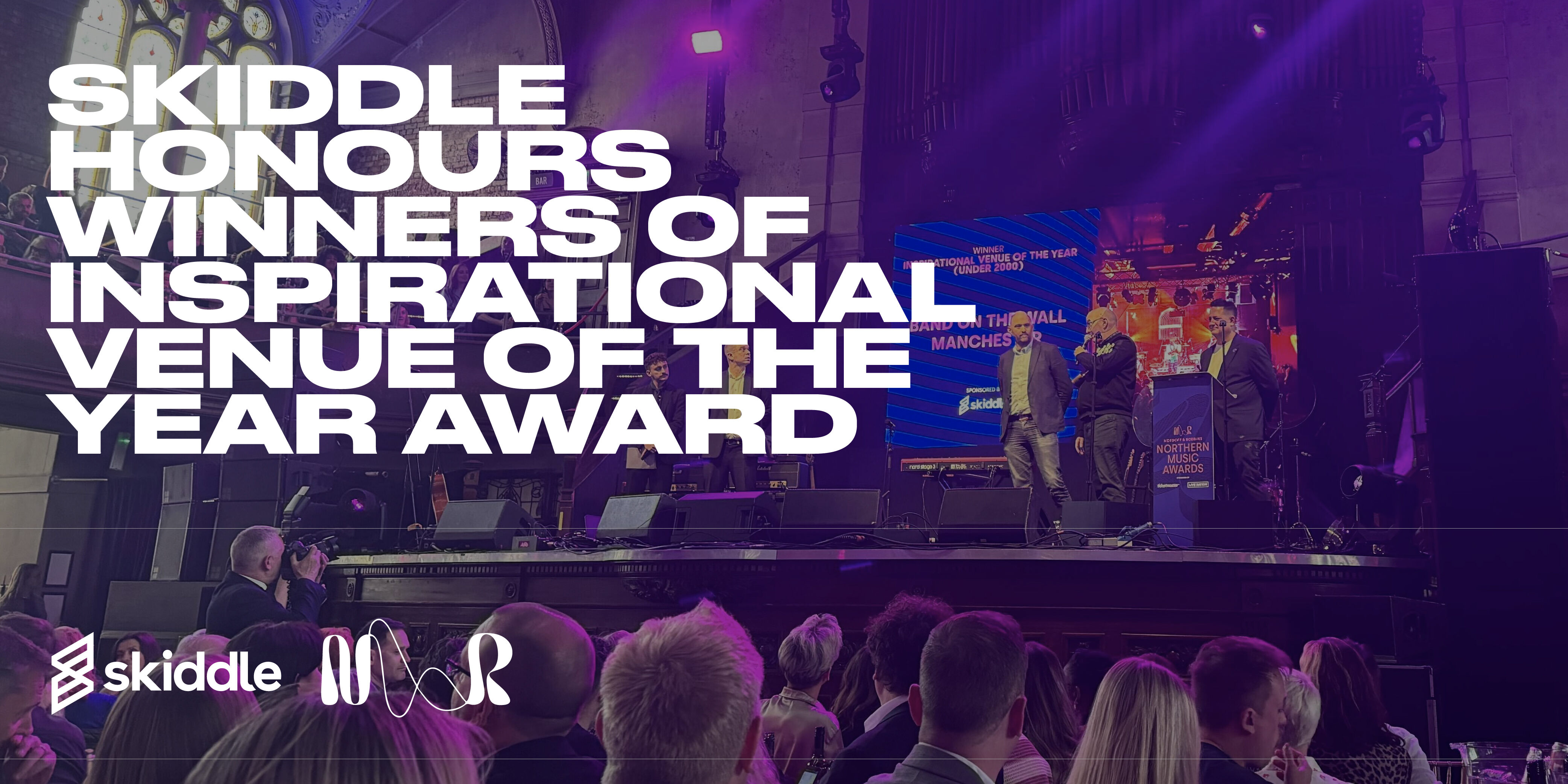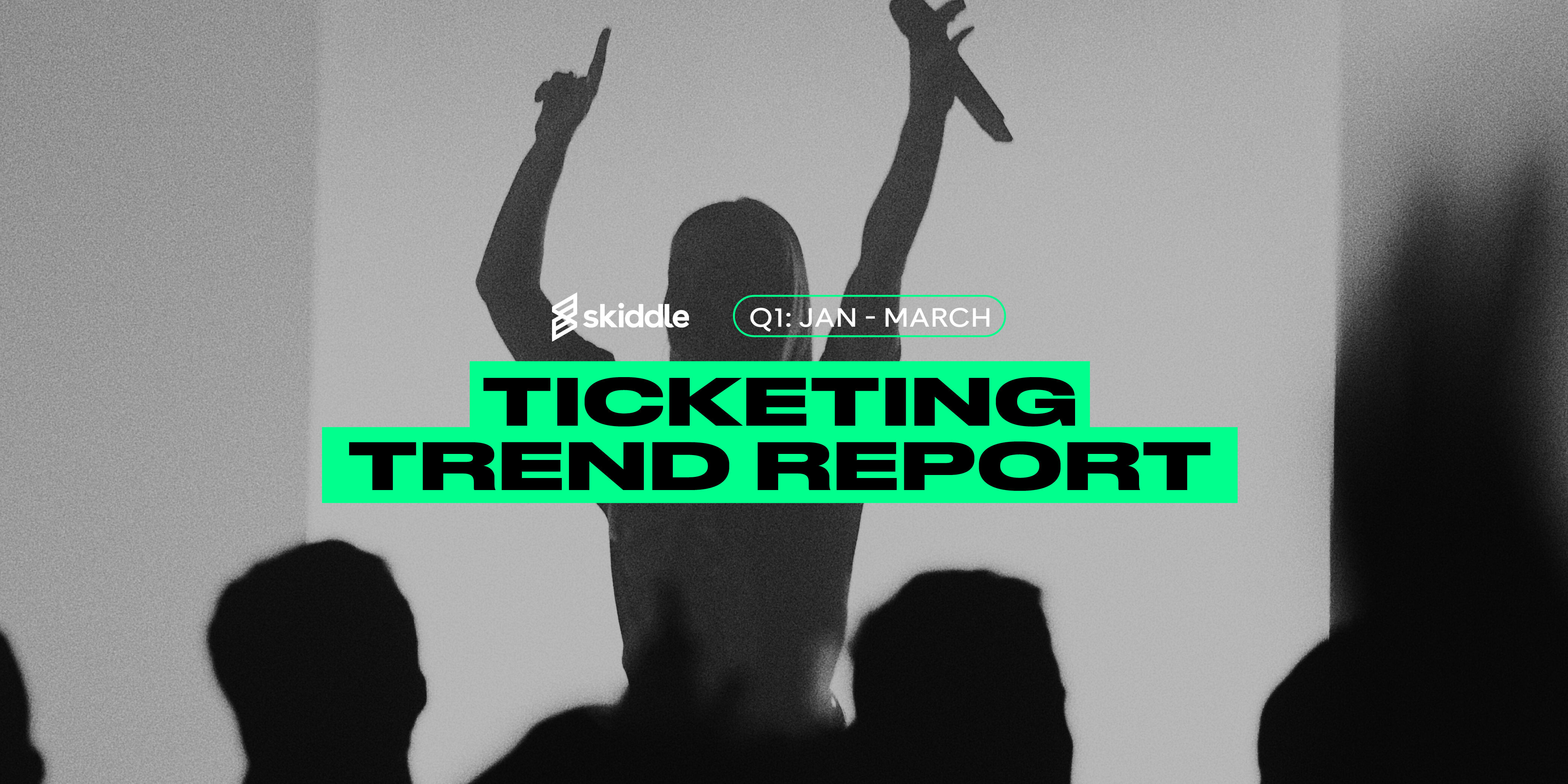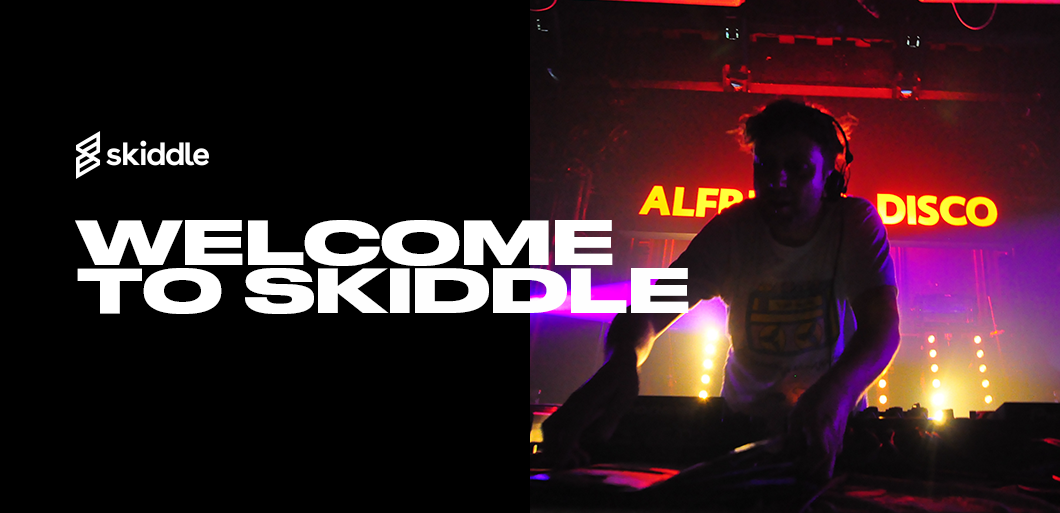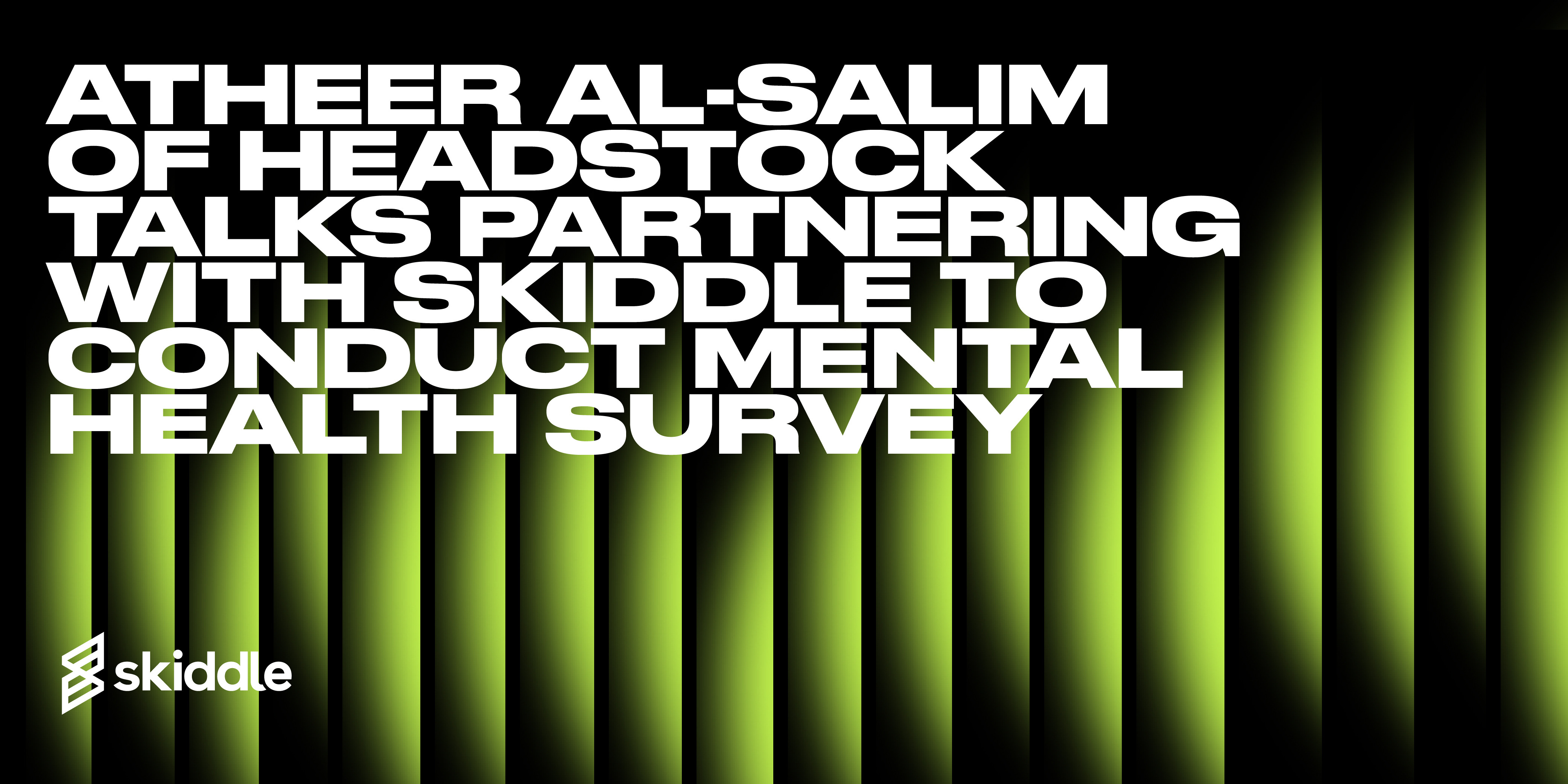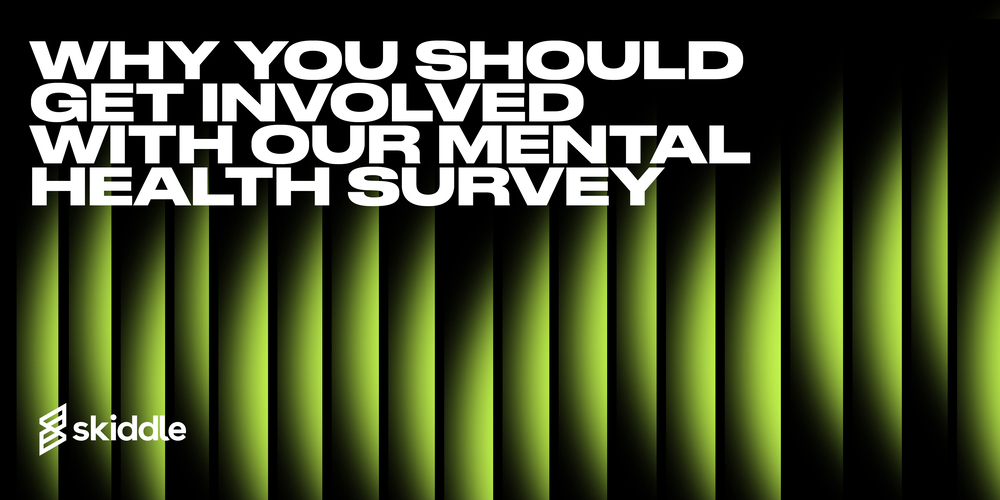- Behind the Scenes
10 questions with SaferDance’s Sam Hennerley and Jack Young
-
By Ryan Moss
- 07 Aug 2023
- 14 min read

“Acknowledge the issue. Commit to tackling the issue. Adopt a continuous improvement mindset.”
Those are the tips that SaferDance co-founders Sam Hennerley and Jack Young would give to promoters who feel they could do more to keep women who attend events safe from harassment.
And sexual harassment is an issue that needs to be acknowledged.
In 2017, YouGov reported that 53% of women experience sexual harassment in a pub, club or bar. In the same study, YouGov found that in the last five years, 31% of women said they had experienced sexual harassment in London, 25% in the rest of the South, 23% in the Midlands, 22% in the North, and 17% in Scotland.
The numbers show that women in all areas experience the same unwanted behaviour.
Seeing and hearing about these issues led Sam and Jack to start SaferDance. It’s an initiative designed to assist promoters, venues and event managers, giving them the tools to keep attendees safe and learn more about the issues that women face on nights out.
With SaferDance, they’ve worked with Birmingham City University, Where You At and Reclaim The Night. In this interview, which has been edited for clarity, we caught up with Safer Dance to discuss their journey, healthy masculinity, the work they do and much, much more.
You were both involved in nightlife before setting up SaferDance. Can you tell us how your experiences in music led to the formation of the initiative?
“For us and a lot of others, music is the definition of expression and freedom. From being avid dance floor researchers to becoming heavily involved in the curation of events, festivals and tours, we got to see and experience the industry from both angles, which highlighted the darker side of the industry we fell in love with. We understood that we wanted to delve deeper into the problems we were visibly experiencing but also hearing about via our communities.

That’s when our research into sexual harassment and misconduct began. We quickly started to realise that this problem had been occurring for many years without combat, challenge or a solution to eradicate this behaviour and attitude from the industry.
That’s where the journey of Safer Dance began. We’re both passionate about change, future-proofing the industry and ensuring that our spaces [are] safer on an emotional and physical level.
Our mission was set. Create a safer dance.”
Back in 2020, Sam developed a sexual harassment framework that he submitted as part of his dissertation. Can you tell us a bit about what it was about?
“The Sexual Harassment Reduction Framework was a starting point, or the seed for Safer Dance to become what it is today. It was essentially a guidance document that outlines the problem of sexual harassment, education around the issue and key principles and policies an organisation can adopt. At the time, it was built for a medium-sized events organisation; the premise behind the framework was to ensure that the conversation of managing and combatting sexual harassment was ‘live’, with the real drive aiming to shift culture and enhance peoples understanding of the issue.”
You worked alongside other organisations to refine the framework. What are the main differences between that original framework and the framework you use now?
“Our knowledge of the issue is far greater, particularly since working alongside RSVP (The Rape and Sexual Violence project), who ratified the original Framework and the recently launched membership How To Guides.
The Framework we use now is way more comprehensive, bringing years of research together, but equally is more adaptable to organisations whether you’re a small, mid-size or even a corporate organisation. [It] covers a range of resources, including education, reporting, self-assessment & feedback (a tailored approach with key recommendations).

We have utilised our experiences and knowledge gathered since the initial framework inception to create what we have today. We have tailored a Risk Management approach through our partnership with RSM to combat sexual harassment, who have supported us with our development and use of their Risk Management Technology Insight4grc.
Our approach looks at four key areas: acknowledgement, commitment, plan and continuous improvement, with experience drawn from our pilot phase with Fabric, London & Universities across the UK. [This] assesses what worked / what could have [worked] better and [aims to] understand the landscape of what organisations need to better manage sexual harassment risk.”
SaferDance is committed to using a collaborative approach to work alongside venues. Was that an approach you knew you wanted to take before the initiative began, or was the idea to approach sexual harassment in this way something you built up over time?
“Since our inception, we have adopted [the] phrase ‘collaboration not competition’. When dealing with a sensitive and serious issue such as sexual harassment, there is no such thing as competition. Throughout our journey, we understood that to create a solution, we needed to collaborate with members of the industry, risk experts and charitable organisations to develop something tangible and effective.”
It feels like SaferDance makes the tools that venues need easy to access. Do you feel that a collaborative approach helps with that? You’re speaking with venues rather than speaking at them.
“One word: community. It’s important [that] we work together to tackle this issue. We’re here to help, and through the development of the membership, we learnt a lot about what venues and organisations alike needed to embed a continuous improvement mindset. Without collaboration, this understanding would not have been possible.

Through our membership, we wanted to provide the tools and fundamental resources that allow venues to tailor their approach to dealing with the issue. It’s not a one size fits all approach, but the underlying factors of improvement remain the same. How these are integrated can look very different. No one understands their business better than them, so the approach of speaking at venues and ‘telling’ them how to improve was something that wasn’t in our thinking. The provision of recommendations and a space of freedom to develop their overall strategies, with support mechanisms in place, felt [like] a more rounded collaborative approach.”
In the Fabric case study, their operations manager mentions that “It’s very easy to take the path of least resistance, and Safer Dance has forced us not to do that”. What does the path of least resistance look like to you, and how does it contribute to the problem of sexual violence in nightlife spaces?
“For us the path of least resistance can take the form of refusing to acknowledge these issues are in your organisation, along with not accepting there is a problem within your space and even society.
A big part of taking the path of least resistance is not seeing it as part of your duty or remit to ensure everyone is safe. It’s necessary to view sexual harassment and the physical and emotional safety of club goers as a number one priority.
As we make clear, acknowledging the issue within your organisation is the first step, whether that’d be proactively talking to your customer base, dedicating management meetings to discuss tackling the issue or ensuring all staff are educated on this matter.
Our membership tools, resources and feedback allow the venues to consider the issue in a wider context, review their current approach and implement new ways of thinking when incorporating sexual harassment considerations.”
You’ve worked with DJ Rebekah and her #ForTheMusic initiative, what has she brought to the work that you do around safety in venues?
“First of all, we want to start by saying what an amazing woman DJ Rebekah is. A complete joy to work alongside and a relationship that has empowered and motivated us to push forward with the Safer Dance initiative.
We first made contact with Rebekah back in 2020, where the Safer Dance solution was very much in a conceptual stage. But, since the first conversation Rebekah has believed in our vision, assisted where possible with collaborative opportunities, outreach and opening doors to organisations/venues with which we have developed working relationships.

For example, the introduction to AFEM; we successfully developed and delivered an online workshop in association with AFEM & UK Live to over 200 venues/event spaces talking about misogyny and sexual harassment within the music industry. Without Rebekah, that shared knowledge and information would not have been passed on.
One final thing we would like to add is we have seen the problem from the dance floor and operational standpoints. But having the connection with Rebekah has also given us a deeper insight into the problem from an artist’s perspective. The problem isn’t just on the dance floors. But green rooms and backstage also.”
As men committed to ending sexual harassment rates at venues, how do you work to become better allies?
“We believe it’s important to be active and turn your words into actions. That would take the form of calling out the problem when you see it, educating yourself on the issue and reporting the issue when you see it, maybe having some uncomfortable conversations. Accept that you are learning and adopt a continuous improvement mindset. But also, most importantly, lead by example. Do good, be good and be a bit kinder each day. Waste no more time arguing what a good man should be. Be one. – Marcus Aurelius.”
The statistics show that the majority of people who carry out sexual harassment are men. How can society promote a healthier view of masculinity?
“We have always said to improve male behaviours in society early, education around these issues will be the catalyst for change. A preventative method that can shape attitudes and behaviours for the better.
For us it’s about finding a balance of strength and control whilst empowering men to showcase emotion, compassion and wider emotions. Masculinity does have its place in society.
Statistics show that the majority of perpetrators are men and it’s imperative that society as a whole tackles this issue. However, it is paramount that men deliver a message of masculinity to other men that demonstrates any form of sexual misconduct is unacceptable. Male role models that promote respect and a healthy attitude towards women are a very important part of promoting ‘healthy masculinity’.”
You’ll be launching SaferDance’s membership scheme imminently. Can you give us some background on the membership, how it works and what people who sign up can expect?
“The Safer.Dance membership brings together years of research on what organisations of all shapes and sizes need to better manage Sexual Harassment Risk.
The membership will give venues, promoters, and organisations alike the opportunity to join a community of doers. They will be granted access to a range of resources that are actively being used within the field to improve the safety of customers, contractors, and employees.
A toolbox of material that provides insight, training, and access to support services/peer networking to actively engage in our continuous improvement roadmap. We are on a mission to improve the safety of our spaces and change attitudes and behaviours in relation to sexual harassment. This membership provides the necessary tools to educate, communicate and commit to eradicating the problem of sexual misconduct within our industry.
For just £199 a year you receive:
Self Assessment & Feedback
- How-To Guides
- Industry specific training
- Peer networking & seminars
- Discounted support services & Anti Spiking Lids
A little more information around the SAQ:
The self-assessment tool gives us an understanding of your current arrangements for managing sexual harassment risk, focusing on four key components: acknowledgement, commitment, planning arrangement (reporting mechanisms, risk assessments), and your approach and attitude to continuous improvement surrounding customer & staff welfare.
The feedback will provide you with an in-depth presentation that can be used for staff training, and onboarding alongside recommendations on how to improve in areas such as; policy, reporting, and communication strategy. This will be developed and reported by risk consultants at RSM UK”
To sign up become a member, visit our website https://saferdance.org/”

Got a question you need an answer to? Give us a call on 03333010301 or ask us a question over on the Skiddle Promoter Twitter account by clicking or tapping on the button below. Alternatively, you can also find a list of our most frequently asked questions over at https://help.promotioncentre.co.uk/







